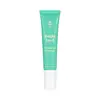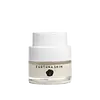What's inside
What's inside
 Key Ingredients
Key Ingredients

 Benefits
Benefits

 Concerns
Concerns

 Ingredients Side-by-side
Ingredients Side-by-side

Aloe Barbadensis Leaf Juice
Skin ConditioningWater
Skin ConditioningSqualane
EmollientBetaine
HumectantCoco-Caprylate
EmollientPropanediol
SolventCetearyl Olivate
Cetearyl Alcohol
EmollientGlyceryl Stearate
EmollientSorbitan Olivate
EmulsifyingPrunus Amygdalus Dulcis Oil
Skin ConditioningGlycerin
HumectantOlea Europaea Fruit Oil
MaskingSodium PCA
HumectantXanthan Gum
EmulsifyingSilica
AbrasiveTocopherol
AntioxidantArnica Montana Flower Extract
MaskingPotassium Sorbate
PreservativeSalicylic Acid
MaskingChlorella Vulgaris Extract
Skin ConditioningSodium Hyaluronate
HumectantSorbic Acid
PreservativeBenzyl Alcohol
PerfumingCI 77891
Cosmetic ColorantMica
Cosmetic ColorantCI 77491
Cosmetic ColorantAloe Barbadensis Leaf Juice, Water, Squalane, Betaine, Coco-Caprylate, Propanediol, Cetearyl Olivate, Cetearyl Alcohol, Glyceryl Stearate, Sorbitan Olivate, Prunus Amygdalus Dulcis Oil, Glycerin, Olea Europaea Fruit Oil, Sodium PCA, Xanthan Gum, Silica, Tocopherol, Arnica Montana Flower Extract, Potassium Sorbate, Salicylic Acid, Chlorella Vulgaris Extract, Sodium Hyaluronate, Sorbic Acid, Benzyl Alcohol, CI 77891, Mica, CI 77491
Water
Skin ConditioningOlea Europaea Leaf Water
Skin ConditioningDicaprylyl Carbonate
EmollientButyrospermum Parkii Butter
Skin ConditioningUndecane
EmollientGlycerin
HumectantBetaine
HumectantOlea Europaea Fruit Oil
MaskingCapryloyl Glycerin/Sebacic Acid Copolymer
Skin ConditioningDiheptyl Succinate
EmollientGlyceryl Stearate Citrate
EmollientPotassium Cetyl Phosphate
EmulsifyingSimmondsia Chinensis Seed Oil
EmollientPropanediol
SolventTridecane
PerfumingCoco-Caprylate/Caprate
EmollientGlyceryl Stearate
EmollientCetearyl Alcohol
EmollientCichorium Intybus Root Oligosaccharides
Skin ConditioningRosa Damascena Flower Extract
MaskingBellis Perennis Flower Extract
Skin ConditioningCynara Cardunculus Seed Oil
AntioxidantCajanus Cajan Leaf Extract
Skin ConditioningSilybum Marianum Extract
Skin ConditioningTaraxacum Officinale Extract
Skin ConditioningHelichrysum Italicum Flower Extract
PerfumingJasminum Sambac Flower Extract
MaskingCrataegus Monogyna Flower Extract
Skin ConditioningCaesalpinia Spinosa Gum
Skin ConditioningBeta Vulgaris Root Extract
Skin ConditioningCichorium Intybus Root Extract
MaskingMalva Sylvestris Flower/Leaf Extract
Skin ConditioningPapaver Rhoeas Flower Extract
Skin ConditioningPortulaca Oleracea Extract
Skin ConditioningLamium Album Leaf Extract
Skin ConditioningCoffea Arabica Seed Extract
MaskingUrtica Dioica Leaf Extract
Skin ConditioningBerberis Vulgaris Stem Extract
Skin ConditioningHelianthus Annuus Seed Oil
EmollientSodium Hyaluronate
HumectantTocopherol
AntioxidantTriheptanoin
Skin ConditioningCastor Oil/Ipdi Copolymer
Dilinoleic Acid/Butanediol Copolymer
C9-12 Alkane
SolventCetearyl Glucoside
EmulsifyingXanthan Gum
EmulsifyingLactobacillus Ferment
Skin ConditioningSilica
AbrasiveTitanium Dioxide
Cosmetic ColorantIron Oxides
Gluconolactone
Skin ConditioningCalcium Gluconate
HumectantSodium Dehydroacetate
PreservativeP-Anisic Acid
MaskingSodium Benzoate
MaskingPotassium Sorbate
PreservativeCitric Acid
BufferingSodium Hydroxide
BufferingWater, Olea Europaea Leaf Water, Dicaprylyl Carbonate, Butyrospermum Parkii Butter, Undecane, Glycerin, Betaine, Olea Europaea Fruit Oil, Capryloyl Glycerin/Sebacic Acid Copolymer, Diheptyl Succinate, Glyceryl Stearate Citrate, Potassium Cetyl Phosphate, Simmondsia Chinensis Seed Oil, Propanediol, Tridecane, Coco-Caprylate/Caprate, Glyceryl Stearate, Cetearyl Alcohol, Cichorium Intybus Root Oligosaccharides, Rosa Damascena Flower Extract, Bellis Perennis Flower Extract, Cynara Cardunculus Seed Oil, Cajanus Cajan Leaf Extract, Silybum Marianum Extract, Taraxacum Officinale Extract, Helichrysum Italicum Flower Extract, Jasminum Sambac Flower Extract, Crataegus Monogyna Flower Extract, Caesalpinia Spinosa Gum, Beta Vulgaris Root Extract, Cichorium Intybus Root Extract, Malva Sylvestris Flower/Leaf Extract, Papaver Rhoeas Flower Extract, Portulaca Oleracea Extract, Lamium Album Leaf Extract, Coffea Arabica Seed Extract, Urtica Dioica Leaf Extract, Berberis Vulgaris Stem Extract, Helianthus Annuus Seed Oil, Sodium Hyaluronate, Tocopherol, Triheptanoin, Castor Oil/Ipdi Copolymer, Dilinoleic Acid/Butanediol Copolymer, C9-12 Alkane, Cetearyl Glucoside, Xanthan Gum, Lactobacillus Ferment, Silica, Titanium Dioxide, Iron Oxides, Gluconolactone, Calcium Gluconate, Sodium Dehydroacetate, P-Anisic Acid, Sodium Benzoate, Potassium Sorbate, Citric Acid, Sodium Hydroxide
Ingredients Explained
These ingredients are found in both products.
Ingredients higher up in an ingredient list are typically present in a larger amount.
Betaine is a common humectant (a substance that promotes retention of moisture). It's known to be gentle on the skin and can help balance hydration.
This ingredient is best for improving hydration and soothing irritated skin. Studies also show it helps even out skin tone.
Fun fact: Betaine is naturally created in the skin and body. The kind found within cosmetic products can be either plant-derived or synthetic.
Another name for betaine is trimethylglycine.
Learn more about BetaineCetearyl alcohol is a mixture of two fatty alcohols: cetyl alcohol and stearyl alcohol. It is mainly used as an emulsifier. Emulsifiers help prevent the separation of oils and products. Due to its composition, it can also be used to thicken a product or help create foam.
Cetearyl alcohol is an emollient. Emollients help soothe and hydrate the skin by trapping moisture.
Studies show Cetearyl alcohol is non-toxic and non-irritating. The FDA allows products labeled "alcohol-free" to have fatty alcohols.
This ingredient is usually derived from plant oils such as palm, vegetable, or coconut oils. There is debate on whether this ingredient will cause acne.
Due to the fatty acid base, this ingredient may not be Malassezia folliculitis safe.
Learn more about Cetearyl AlcoholGlycerin is already naturally found in your skin. It helps moisturize and protect your skin.
A study from 2016 found glycerin to be more effective as a humectant than AHAs and hyaluronic acid.
As a humectant, it helps the skin stay hydrated by pulling moisture to your skin. The low molecular weight of glycerin allows it to pull moisture into the deeper layers of your skin.
Hydrated skin improves your skin barrier; Your skin barrier helps protect against irritants and bacteria.
Glycerin has also been found to have antimicrobial and antiviral properties. Due to these properties, glycerin is often used in wound and burn treatments.
In cosmetics, glycerin is usually derived from plants such as soybean or palm. However, it can also be sourced from animals, such as tallow or animal fat.
This ingredient is organic, colorless, odorless, and non-toxic.
Glycerin is the name for this ingredient in American English. British English uses Glycerol/Glycerine.
Learn more about GlycerinGlyceryl Stearate is a mix of glycerin and stearic acid.
It is used to stabilize the mixing of water and oil ingredients. By preventing these ingredients from separating, it can help elongate shelf life. It can also help thicken the product's texture.
As an emollient, it helps soften skin and supports barrier-replenishing ingredients.
In cosmetics, Glyceryl Stearate is often made from vegetable oils or synthetically produced.
This ingredient may not be fungal-acne safe
Fun fact: The human body also creates Glyceryl Stearate naturally.
Learn more about Glyceryl StearateOlea Europaea Fruit Oil is the fixed oil obtained from the ripe fruit of the Olive. In other words - olive oil.
The primary contents of olive oil are glycerides of the fatty acids linoleic, oleic and palmitic.
Olive oil also contains antioxidants such as Vitamin E. Antioxidants may help reduce signs of aging by fighting unstable free-radical molecules. It also contains Vitamins A (retinol), D, and K.
The squalene in olive oil makes it a great emollient. Emollients help soothe and soften your skin by trapping moisture in. This makes olive oil a great skin moisturizer.
Studies show olive oil to have antibacterial and antifungal properties in low concentrations. Another study found olive oil irritated sensitive oily skin. We always recommend speaking with a professional about using this ingredient in your routine.
Due to the fatty acid content, this ingredient may not be fungal-acne safe.
Learn more about Olea Europaea Fruit OilPotassium Sorbate is a preservative used to prevent yeast and mold in products. It is commonly found in both cosmetic and food products.
This ingredient comes from potassium salt derived from sorbic acid. Sorbic acid is a natural antibiotic and effective against fungus.
Both potassium sorbate and sorbic acid can be found in baked goods, cheeses, dried meats, dried fruit, ice cream, pickles, wine, yogurt, and more.
You'll often find this ingredient used with other preservatives.
Learn more about Potassium SorbatePropanediol is an all-star ingredient. It softens, hydrates, and smooths the skin.
It’s often used to:
Propanediol is not likely to cause sensitivity and considered safe to use. It is derived from corn or petroleum with a clear color and no scent.
Learn more about PropanediolSilica, also known as silicon dioxide, is a naturally occurring mineral. It is used as a fine, spherical, and porous powder in cosmetics.
Though it has exfoliant properties, the function of silica varies depending on the product.
The unique structure of silica enhances the spreadability and adds smoothness, making it a great texture enhancer.
It is also used as an active carrier, emulsifier, and mattifier due to its ability to absorb excess oil.
In some products, tiny microneedles called spicules are made from silica or hydrolyzed sponge. When you rub them in, they lightly polish away dead skin layers and enhance the penetration of active ingredients.
Learn more about SilicaSodium Hyaluronate is hyaluronic acid's salt form. It is commonly derived from the sodium salt of hyaluronic acid.
Like hyaluronic acid, it is great at holding water and acts as a humectant. This makes it a great skin hydrating ingredient.
Sodium Hyaluronate is naturally occurring in our bodies and is mostly found in eye fluid and joints.
These are some other common types of Hyaluronic Acid:
Learn more about Sodium HyaluronateTocopherol (also known as Vitamin E) is a common antioxidant used to help protect the skin from free-radicals and strengthen the skin barrier. It's also fat soluble - this means our skin is great at absorbing it.
Vitamin E also helps keep your natural skin lipids healthy. Your lipid skin barrier naturally consists of lipids, ceramides, and fatty acids. Vitamin E offers extra protection for your skin’s lipid barrier, keeping your skin healthy and nourished.
Another benefit is a bit of UV protection. Vitamin E helps reduce the damage caused by UVB rays. (It should not replace your sunscreen). Combining it with Vitamin C can decrease sunburned cells and hyperpigmentation after UV exposure.
You might have noticed Vitamin E + C often paired together. This is because it is great at stabilizing Vitamin C. Using the two together helps increase the effectiveness of both ingredients.
There are often claims that Vitamin E can reduce/prevent scarring, but these claims haven't been confirmed by scientific research.
Learn more about TocopherolWater. It's the most common cosmetic ingredient of all. You'll usually see it at the top of ingredient lists, meaning that it makes up the largest part of the product.
So why is it so popular? Water most often acts as a solvent - this means that it helps dissolve other ingredients into the formulation.
You'll also recognize water as that liquid we all need to stay alive. If you see this, drink a glass of water. Stay hydrated!
Learn more about WaterXanthan gum is used as a stabilizer and thickener within cosmetic products. It helps give products a sticky, thick feeling - preventing them from being too runny.
On the technical side of things, xanthan gum is a polysaccharide - a combination consisting of multiple sugar molecules bonded together.
Xanthan gum is a pretty common and great ingredient. It is a natural, non-toxic, non-irritating ingredient that is also commonly used in food products.
Learn more about Xanthan Gum